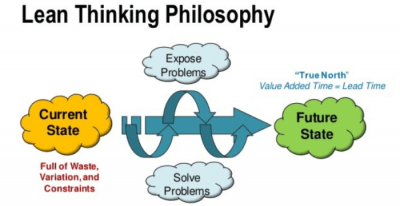As elaborated in Part 1, the recent integration of Lean Thinking into the healthcare sector has sparked optimism about the feasibility of continuous improvement – a core outcome of Lean principles – within healthcare organizations. This optimism hinges on the implementation of key organizational principles. One of these principles, drawn from the Toyota Production System, is known as ‘learning to see.’ It emphasizes the importance of training staff to identify inefficiencies within their systems and understand the root causes of problems.

Mapping the Current State
Begin the process of mapping by identifying the starting and ending points from the patient’s perspective. Delve into every significant step in between. To gain a precise understanding of the current process, consider physically tracing it, taking into account how people move, the involvement of customers and suppliers, information flow, technology utilization, process sequencing, initiation triggers, and time allocations for each step, including waiting times. Maintain focus on high-level steps and prioritize the regular process over exceptions.
Identifying Waste
Examine the current process map to pinpoint flow disruptions or steps that do not contribute value to patients – this is your process waste. Lean methodology identifies seven categories of waste that can be adapted to healthcare practices:
- Overproduction: Unnecessary tasks, like prescribing antibiotics for viral infections.
- Motion: Avoidable movements of patients, staff, or physicians.
- Material Movement: Unnecessary transfers of materials or information, such as patient intake forms moving from the front office to the back office to the physician.
- Waiting: Delays or idle periods involving patients, physicians, or staff.
- Inventory: Information or materials waiting to be utilized, such as unread laboratory reports or patient booklets in the waiting area.
- Inappropriate Processing: Excessive work handling, like redundant paperwork or scheduling separate visits for care when one visit would suffice.
- Rework: Additional work caused by errors, such as sending patients back to the laboratory due to incomplete lab orders.
In Part 3, we will delve into real-world examples of identifying the current state and recognizing various types of waste within the healthcare process.



